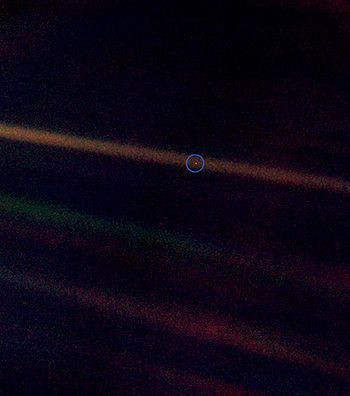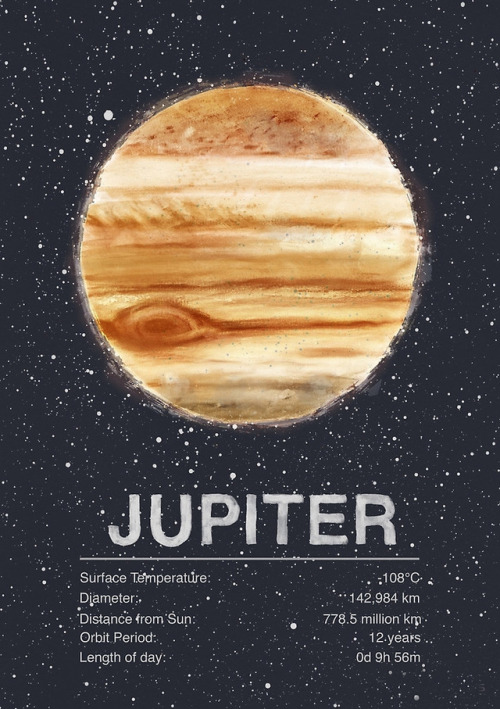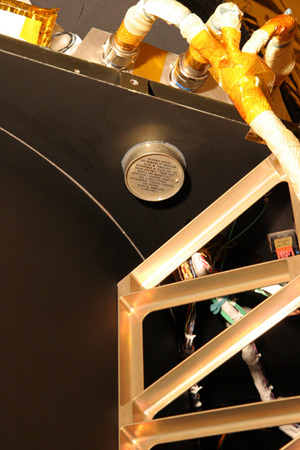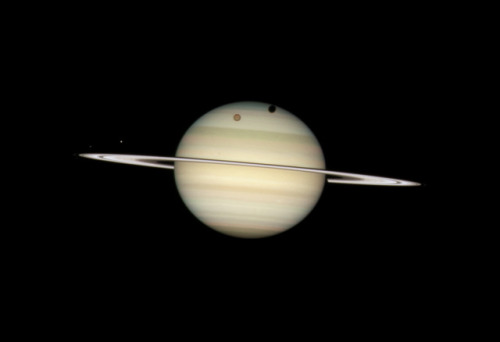Mars Helicopter: 6 Things To Know About Ingenuity
Mars Helicopter: 6 Things to Know About Ingenuity

When our Perseverance Mars rover lands on the Red Planet on Feb. 18, 2021, it will bring along the Ingenuity helicopter.
This small-but-mighty craft is a technology demonstration that will attempt the first powered, controlled flight on another planet. Its fuselage is about the size of a tissue box, and it weighs about 4 pounds (1.8 kg) on Earth. It started out six years ago as an implausible prospect and has now passed its Earthbound tests.
Here are six things to know about Ingenuity as it nears Mars:
1. Ingenuity is an experimental flight test.

This Mars helicopter is known as a technology demonstration, which is a project that aims to test a new capability for the first time with a limited scope. Previous technology demonstrations include Sojourner, the first Mars rover, and the Mars Cube One (MarCO) CubeStats that flew by Mars.
Ingenuity does not carry any science instruments and is not part of Perseverance’s science mission. The only objective for this helicopter is an engineering one – to demonstrate rotorcraft flight in the thin and challenging Martian atmosphere.
2. Mars won’t make it easy for Ingenuity.

Mars’ atmosphere is around 1% the density of Earth’s. Because of that lack of density, Ingenuity has rotor blades that are much larger and spin faster than a helicopter of Ingenuity’s mass here on our planet. It also must be extremely light to travel to Mars.
The Red Planet also has incredibly cold temperatures, with nights reaching minus 130 degrees Fahrenheit (-90 degrees Celsius) in Jezero Crater, where our rover and helicopter will land. Tests on Earth at the predicted temperatures indicate Ingenuity’s parts should work as designed, but the real test will be on Mars.
3. Ingenuity relies on Perseverance for safe passage to Mars and operations on the Martian surface.

Ingenuity is nestled sideways under Perseverance’s belly with a cover to protect the helicopter from debris during landing. The power system on the Mars 2020 spacecraft periodically charges Ingenuity’s batteries during the journey to the Red Planet.
In the first few months after landing, Perseverance will find a safe place for Ingenuity. Our rover will shed the landing cover, rotate the helicopter so its legs face the ground and gently drop it on the Martian surface.
4. Ingenuity is smart for a small robot.

NASA’s Jet Propulsion Laboratory will not be able to control the helicopter with a joystick due to delays communicating with spacecraft across interplanetary distances. That means Ingenuity will make some of its own decisions based on parameters set by its engineering team on Earth.
During flight, Ingenuity will analyze sensor data and images of the terrain to ensure it stays on a flight path designed by project engineers.
5. The Ingenuity team counts success one step at a time.

Ingenuity’s team has a long list of milestones the helicopter must pass before it can take off and land in the Martian atmosphere.
Surviving the journey to and landing on Mars
Safely deploying onto the Martian surface from Perseverance’s belly
Autonomously keeping warm through those intensely cold Martian nights
Autonomously charging itself with its solar panel
Successfully communicating to and from the helicopter via the Mars Helicopter Base Station on Perseverance
6. If Ingenuity succeeds, future Mars exploration could include an ambitious aerial dimension.

The Mars helicopter intends to demonstrate technologies and first-of-its-kind operations needed for flying on Mars. If successful, these technologies and flight experience on another planet could pave the way for other advanced robotic flying vehicles.
Possible uses of a future helicopter on Mars include:
A unique viewpoint not provided by current orbiters, rovers or landers
High-definition images and reconnaissance for robots or humans
Access to terrain that is difficult for rovers to reach
Could even carry light but vital payloads from one site to another
Make sure to follow us on Tumblr for your regular dose of space: http://nasa.tumblr.com
More Posts from Sergioballester-blog and Others

Discovery Shuttle docked to the ISS. 🌎🚀
Launching of the space shuttle Atlantis.


The Pale Blue Dot
The “Pale Blue Dot” is a photograph of planet Earth taken in 1990 by Voyager 1 from a record distance, showing it against the vastness of space.
By request of Carl Sagan, NASA commanded the Voyager 1 spacecraft, having completed its primary mission and now leaving the Solar System, to turn its camera around and to take a photograph of Earth across a great expanse of space. Reflecting on this picture (now considered one of the most important pictures in all of human history) Carl Sagan said:
“From this distant vantage point, the Earth might not seem of particular interest. But for us, it’s different. Consider again that dot. That’s here, that’s home, that’s us. On it everyone you love, everyone you know, everyone you ever heard of, every human being who ever was, lived out their lives. The aggregate of our joy and suffering, thousands of confident religions, ideologies, and economic doctrines, every hunter and forager, every hero and coward, every creator and destroyer of civilization, every king and peasant, every young couple in love, every mother and father, hopeful child, inventor and explorer, every teacher of morals, every corrupt politician, every “superstar,” every “supreme leader,” every saint and sinner in the history of our species lived there – on a mote of dust suspended in a sunbeam.
The Earth is a very small stage in a vast cosmic arena. Think of the rivers of blood spilled by all those generals and emperors so that, in glory and triumph, they could become the momentary masters of a fraction of a dot. Think of the endless cruelties visited by the inhabitants of one corner of this pixel on the scarcely distinguishable inhabitants of some other corner, how frequent their misunderstandings, how eager they are to kill one another, how fervent their hatreds.
Our posturings, our imagined self-importance, the delusion that we have some privileged position in the Universe, are challenged by this point of pale light. Our planet is a lonely speck in the enveloping cosmic dark. In our obscurity, in all this vastness, there is no hint that help will come from elsewhere to save us from ourselves.
The Earth is the only world known so far to harbor life. There is nowhere else, at least in the near future, to which our species could migrate. Visit, yes. Settle, not yet. Like it or not, for the moment the Earth is where we make our stand.
It has been said that astronomy is a humbling and character-building experience. There is perhaps no better demonstration of the folly of human conceits than this distant image of our tiny world. To me, it underscores our responsibility to deal more kindly with one another, and to preserve and cherish the pale blue dot, the only home we’ve ever known.”

Shuttle Endeavour’s flight deck. 🚀








Our Amazing Solar System!

Jupiter’s Racing Stripes by NASA’s Marshall Space Flight Center




jupiter
Going the Distance... In Space
On April 17, NASA's New Horizons crossed a rare deep-space milestone – 50 astronomical units from the Sun, or 50 times farther from the Sun than Earth is. New Horizons is just the fifth spacecraft to reach this great distance, following the legendary Voyagers 1 and 2 and Pioneers 10 and 11. It’s almost 5 billion miles (7.5 billion kilometers) away; a remote region where a signal radioed from NASA's largest antennas on Earth, even traveling at the speed of light, needs seven hours to reach the far-flung spacecraft.
To celebrate reaching 50 AU, the New Horizons team compiled a list of 50 facts about the mission. Here are just a few of them; you'll find the full collection at: http://pluto.jhuapl.edu/News-Center/Fifty-Facts.php.

New Horizons is the first – and so far, only – spacecraft to visit Pluto. New Horizons sped through the Pluto system on July 14, 2015, providing a history-making close-up view of the dwarf planet and its family of five moons.
New Horizons is carrying some of the ashes of Pluto’s discoverer, Clyde Tombaugh. In 1930, the amateur astronomer spotted Pluto in a series of telescope images at Lowell Observatory in Arizona, making him the first American to discover a planet.

The “Pluto Not Yet Explored” U.S. stamp that New Horizons carries holds the Guinness World Record for the farthest traveled postage stamp. The stamp was part of a series created in 1991, when Pluto was the last unexplored planet in the solar system.

Dispatched at 36,400 miles per hour (58, 500 kilometers per hour) on January 19, 2006, New Horizons is still the fastest human-made object ever launched from Earth.
As the spacecraft flew by Jupiter’s moon Io, in February 2007, New Horizons captured the first detailed movie of a volcano erupting anywhere in the solar system except Earth.

New Horizons’ radioisotope thermoelectric generator (RTG) – its nuclear battery – will provide enough power to keep the spacecraft operating until the late-2030s.

Measurements of the universe’s darkness using New Horizons data found that the universe is twice as bright as predicted – a major extragalactic astronomy discovery!

New Horizons’ Venetia Burney Student Dust Counter is the first student-built instrument on any NASA planetary mission – and is providing unprecedented insight into the dust environment in the outer solar system.

New Horizons is so far away, that even the positons of the stars look different than what we see from Earth. This view of an "alien sky" allowed scientists to make stereo images of the nearest stars against the background of the galaxy.

Arrokoth – the official name the mission team proposed for the Kuiper Belt object New Horizons explored in January 2019 – is a Native American term that means “sky” in the Powhatan/Algonquin language.

Stay tuned in to the latest New Horizons updates on the mission website and follow NASA Solar System on Twitter and Facebook.
Make sure to follow us on Tumblr for your regular dose of space: http://nasa.tumblr.com.

Saturn With Quadruple Moon Presence – Hubble Telescope
NASA’s Search for Life: Astrobiology in the Solar System and Beyond
Are we alone in the universe? So far, the only life we know of is right here on Earth. But here at NASA, we’re looking.

We’re exploring the solar system and beyond to help us answer fundamental questions about life beyond our home planet. From studying the habitability of Mars, probing promising “oceans worlds,” such as Titan and Europa, to identifying Earth-size planets around distant stars, our science missions are working together with a goal to find unmistakable signs of life beyond Earth (a field of science called astrobiology).
Dive into the past, present, and future of our search for life in the universe.

Mission Name: The Viking Project
Launch: Viking 1 on August 20, 1975 & Viking 2 on September 9, 1975
Status: Past
Role in the search for life: The Viking Project was our first attempt to search for life on another planet. The mission’s biology experiments revealed unexpected chemical activity in the Martian soil, but provided no clear evidence for the presence of living microorganisms near the landing sites.

Mission Name: Galileo
Launch: October 18, 1989
Status: Past
Role in the search for life: Galileo orbited Jupiter for almost eight years, and made close passes by all its major moons. The spacecraft returned data that continues to shape astrobiology science –– particularly the discovery that Jupiter’s icy moon Europa has evidence of a subsurface ocean with more water than the total amount of liquid water found on Earth.

Mission Name: Kepler and K2
Launch: March 7, 2009
Status: Past
Role in the search for life: Our first planet-hunting mission, the Kepler Space Telescope, paved the way for our search for life in the solar system and beyond. Kepler left a legacy of more than 2,600 exoplanet discoveries, many of which could be promising places for life.

Mission Name: Perseverance Mars Rover
Launch: July 30, 2020
Status: Present
Role in the search for life: Our newest robot astrobiologist is kicking off a new era of exploration on the Red Planet. The rover will search for signs of ancient microbial life, advancing the agency’s quest to explore the past habitability of Mars.

Mission Name: James Webb Space Telescope
Launch: 2021
Status: Future
Role in the search for life: Webb will be the premier space-based observatory of the next decade. Webb observations will be used to study every phase in the history of the universe, including planets and moons in our solar system, and the formation of distant solar systems potentially capable of supporting life on Earth-like exoplanets.

Mission Name: Europa Clipper
Launch: Targeting 2024
Status: Future
Role in the search for life: Europa Clipper will investigate whether Jupiter’s icy moon Europa, with its subsurface ocean, has the capability to support life. Understanding Europa’s habitability will help scientists better understand how life developed on Earth and the potential for finding life beyond our planet.

Mission Name: Dragonfly
Launch: 2027
Status: Future
Role in the search for life: Dragonfly will deliver a rotorcraft to visit Saturn’s largest and richly organic moon, Titan. This revolutionary mission will explore diverse locations to look for prebiotic chemical processes common on both Titan and Earth.
For more on NASA’s search for life, follow NASA Astrobiology on Twitter, on Facebook, or on the web.
Make sure to follow us on Tumblr for your regular dose of space!
-
 iknowaladygoodandevil liked this · 11 months ago
iknowaladygoodandevil liked this · 11 months ago -
 brotherjaybird liked this · 1 year ago
brotherjaybird liked this · 1 year ago -
 bronzecelestial liked this · 2 years ago
bronzecelestial liked this · 2 years ago -
 princesspink48484 reblogged this · 2 years ago
princesspink48484 reblogged this · 2 years ago -
 princesspink48484 liked this · 2 years ago
princesspink48484 liked this · 2 years ago -
 beomseokchae liked this · 2 years ago
beomseokchae liked this · 2 years ago -
 idee-montijo liked this · 3 years ago
idee-montijo liked this · 3 years ago -
 artistlearningsstuff liked this · 3 years ago
artistlearningsstuff liked this · 3 years ago -
 wachsurfer2018 liked this · 3 years ago
wachsurfer2018 liked this · 3 years ago -
 drewcifer4 liked this · 3 years ago
drewcifer4 liked this · 3 years ago -
 the-queer-spanish-inquisition liked this · 3 years ago
the-queer-spanish-inquisition liked this · 3 years ago -
 mrclaw61 liked this · 3 years ago
mrclaw61 liked this · 3 years ago -
 classygreenwarlock liked this · 3 years ago
classygreenwarlock liked this · 3 years ago -
 metalzoic liked this · 4 years ago
metalzoic liked this · 4 years ago -
 mythbookworm18 liked this · 4 years ago
mythbookworm18 liked this · 4 years ago -
 k-crimson liked this · 4 years ago
k-crimson liked this · 4 years ago -
 wakayume liked this · 4 years ago
wakayume liked this · 4 years ago -
 bridge-to-knowhere liked this · 4 years ago
bridge-to-knowhere liked this · 4 years ago -
 gerrytwin reblogged this · 4 years ago
gerrytwin reblogged this · 4 years ago -
 gerrytwin liked this · 4 years ago
gerrytwin liked this · 4 years ago -
 quamatoc reblogged this · 4 years ago
quamatoc reblogged this · 4 years ago -
 lyydt liked this · 4 years ago
lyydt liked this · 4 years ago -
 cliffsteele reblogged this · 4 years ago
cliffsteele reblogged this · 4 years ago -
 irishwhiskeyneatplease liked this · 4 years ago
irishwhiskeyneatplease liked this · 4 years ago